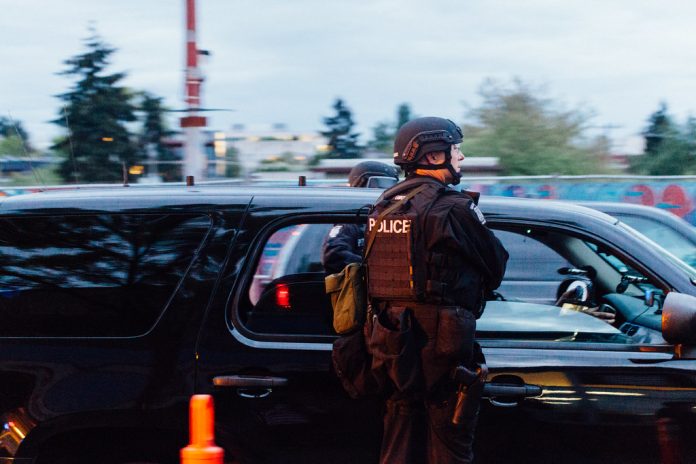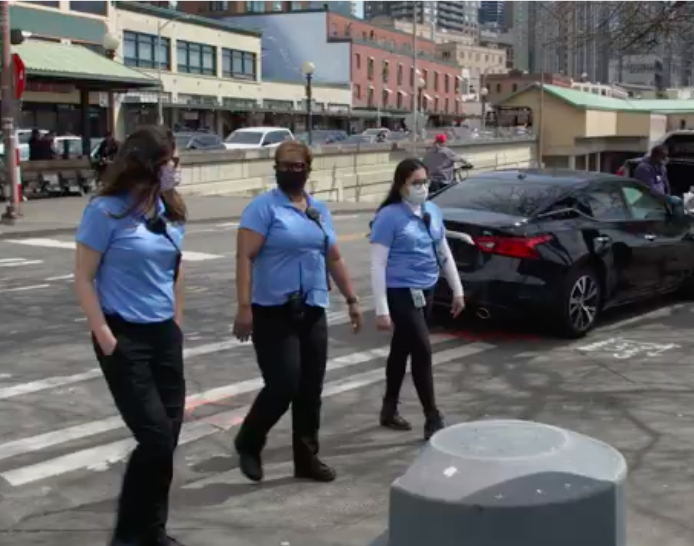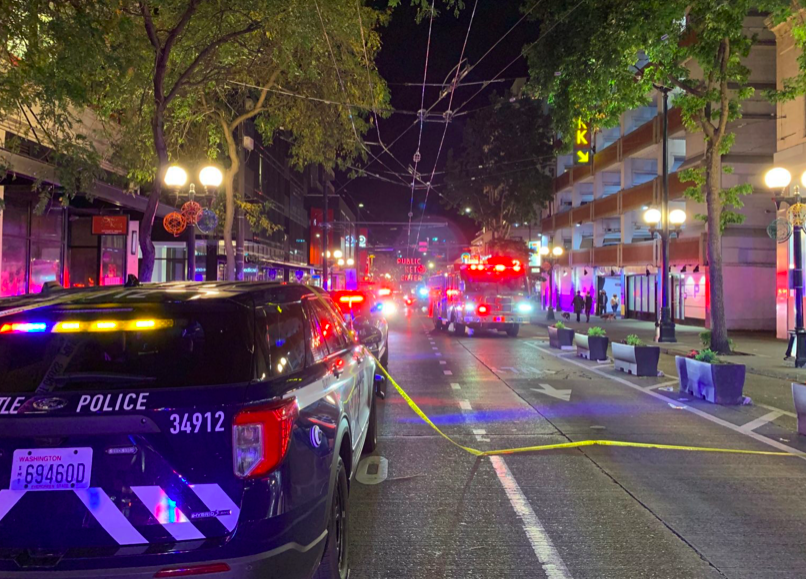
I admit to having mixed feelings about the phrase “defund the police.” When I was working on community policing in the 1990s, police budgets paid my salary.
But as our candidates for elected office in Seattle debate the future of how we invest in public safety here, the right answer is crystal clear.
The way the Seattle Police Department (SPD) operates guarantees a “doom loop” of doing “less with more” at handling, solving, and preventing serious crime. The only way to break the cycle is to catch the department up with police science and, in the process, reallocate substantial funds from sworn officer positions to other roles.
This will have the dual benefit of getting us more bang for our buck for overall public safety service while getting a lot more value from the officers we do need when being equipped with the power of arrest and a firearm is strictly necessary.
To understand how much upside there is, we first have to understand how bad things are.
SPD and serious crime: doing less with more
Police departments report crime data to the FBI through the Uniform Crime Reporting (“UCR”) program. Seven crimes are considered serious crimes (“Part One”) in its rubric: murder and nonnegligent homicide, rape, robbery, aggravated assault, burglary, motor vehicle theft, larceny-theft, and arson.
In 1990, with a budgeted strength of 1,271 sworn officers, SPD handled 65,053 serious crimes (“sworn officer” in common parlance means police officers who carry a gun and have the power of arrest). In 2019, with a budgeted strength of 1,371, SPD handled 39,055.
This data is consistent with a big decline in crime in the United States that we know about because the Census Bureau runs an annual survey tracking overall victimization whether or not it was reported to the police. But for whatever reason — an actual decline or more underreporting (which we can come back to later), the simple fact is that serious crimes handled per officer dropped from 51.1 to 28.5.
One would hope that with a smaller serious crime workload, our police would solve more of them (since — obviously — they aren’t doing any work on crimes they never even hear about).
Unfortunately, the opposite is the case. In 1990, SPD cleared — a proxy measure for solved — 13,425 of them, or 20.5%. In 2019, it was 3,447, or 8.8%. Crimes solved per officer dropped even more than crimes handled — from 10.6 to 3.1.
Even worse, SPD’s budget has increased faster than the rate of inflation. So if we take the cost per serious crime handled and the cost per serious crime solved as fundamental measures of our return on investment into policing, we can quantify the magnitude of “just how much” less with more we’re talking about.
In 1990, each crime handled cost us $3,286 and each crime solved $15,923. In 2019, the corresponding numbers were at least (“at least” because I’ve entirely backed out catch-up costs to true up salaries to the new contract, some of which should be allocated toward 2019) $8,278 and $93,791, respectively. (All figures are in 2019 dollars, adjusted for inflation; the budget data sources are City of Seattle budget documents and a Federal report on police in large cities in 1990.)
How did we arrive at this point? It’s the outcome of a big lie — or, really, a nested set of big lies — that SPD leadership uses to justify sworn officer positions, while at the same time kneecapping value for cost.
Big lies, all the way down
SPD leadership uses response times to 911 calls as a metric to justify sworn officer staffing. SPD divides calls for service into nine “priorities,” and lately we’ve been hearing a lot about missing response times for high-priority calls and not being able to respond at all to low priority calls.
Don’t even try to work back from this scheme to anything sensible. It’s flim flam built on wrongheadedness. Instead, let’s start with some ground truths about how a department run on police science might work.
First: lots of 911 calls are non-crime in nature: 44% according to an SPD presentation to the City Council, 49% according to a third-party analysis commissioned by the Mayor. The latter analysis shows that during the period analyzed, sworn officers spent 2,413,916 hours on non-criminal response (by comparison, they spent 281,852 on serious violent felonies).
At current budgeted rates, SPD can hire three (unarmed) community services officers for every two sworn officers. A similar proportion likely holds true for crisis intervention or traffic specialists.
This is important in two ways. The least important is that we could have staffed up the same number of person hours for less.
The more important is that unnecessarily using sworn officers puts a cost premium on person-hours. While serious crime reported to the police has not increased along with Seattle’s population, what if (for example) noise complaints, missing persons reports, and people in crisis have?
Maximizing the use of every role from community service officer to social worker to traffic specialist would buy us half again as much capacity to handle non-criminal calls.
When SPD claims to not have the staff available to handle lower priority calls (which skew more than the first two toward non-criminal) the shortage is of its own making. And if non-criminal calls have increased while serious crimes reported to the police have declined, the former are cannibalizing sworn officers’ time.
Second, and as or even more important: most crime is reported after-the-fact, making a rapid response to a 911 call anywhere from low-value to pointless. Research on 911 calls has found a majority of property crimes are reported after the fact — typically because there’s a delay between occurrence and discovery (e.g., your house was burgled while you were at work or your car was stolen overnight).
But even a plurality of violent crimes are reported long enough after the fact to make rapid response of questionable value. Victims frequently leave the scene, call a loved one, or debate calling the police at all (or some combination) before dialing 911.
There’s a steeply declining curve starting at a one minute reporting delay after a crime that predicts whether or not a rapid response will directly lead to an arrest. At five minutes, a rapid response is no more effective than one taking an hour.
Out of 274,000 911 calls in 2019, just about 3,200 were classified as “In Progress / Just Occurred” (“IPJO”) on the public SPD crime dashboard. Some of them weren’t crimes (such as risk of suicide or injury accident, where “someone with a gun” might not really be the optimal responder). So on the order of 1% of 911 calls are cases where a rapid response by an armed officer is highly likely to lead to an arrest as a result.
A lot of criminal 911 calls put officers on a wild goose chase unlikely to lead to arrest in order to meet response time metrics that have no bearing on intervening or solving crime.
What might better look like?
Unlocking a path to a better place requires police — and political — leadership to come clean on the bankruptcy of the current scheme by which SPD operates (and justifies sworn headcount).
A great many calls for service would be shifted to roles including community service officers, crisis intervention specialists, investigative aides, traffic specialists, and evidence technicians. This would buy us more for less — or more for the same — for a great many public safety needs. But change would also unlock the capacity of sworn officers to make a difference on crime.
First, crime doesn’t happen with equal probability in all places at all times. Excellence at responding to the few thousand 911 calls per year where rapid response is high-value probably doesn’t look like everyone running around hither and yon chasing the latest random dispatch. Rather, some officers should be positioned, using data, to maximize the chance of getting where they need to be, when.
This might look like an assignment — as a percentage of shift or a rotation — to rapid response.

For other officers, more time should be freed to do things proven to impact crime. Most of their time should be under their control, or schedulable. Directed foot patrol has been proven to have a deterrent effect on crime. “Hot spot policing” — placing officers in strategically chosen, high-crime areas — has also been shown to be effective. Getting to know a fixed beat, and the people who live in it — good, bad, and on the bubble — has too, as has a strategic focus on identifying and neutralizing frequent offenders.
It’s unfortunate to be writing about what research during the 1970s and 1980s had proven by the 1990s: getting officers out of their cars and off a 911 hamster wheel was key to better results.
But it’s “glass half full” for SPD operating as if everything the profession has learned until then, and up to now, doesn’t exist. It makes the path forward easy to see — and do, with political will and professional integrity.
A final note: equity
I don’t have an eloquent way to put this: this article does not do justice to issues of racial equity, nor issues raised by folks who identify as abolitionists lately. I know this, I own this. Care about racial justice was one of my prime motivations for doing police work in the 1990s, and I can say with 100% certainty I have learned a lot from those pushing for more than just incremental reform since then.
For better or worse, I chose to tackle some issues in this article, and leave others until another. I’ll try to do those I did not address here some justice in the next.

Bryan Kirschner
Bryan Kirschner works in technology and lives in Wallingford.

